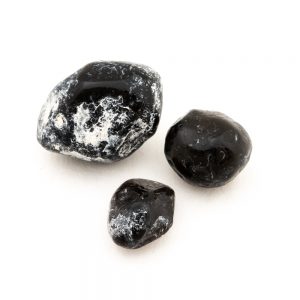- Apache Tears Stones For Sale
- Apache Tears Obsidian Jewelry
- Apache Tear Obsidian Stone
- How To Clean Apache Tears
- Apache Tear Obsidian Meaning


Apache Tears are a softer, gentler form of Obsidian. It is extremely useful if you are working through really deep traumas and need to take it slowly. Like Obsidian, Apache Tears are an excellent grounding stone connecting the energy of the Heart to the Earth. It is a strong protection stone, protecting one from physical and emotional harm, as. This variety is a stone of truths that can reveal secrets and answer. Healing Properties of Apache Tear Obsidian Spiritual: Apache Tears have a more gentle energy than regular Black Obsidian. Apache Tears help us to process through negative emotions slowly, allowing the emotions to be understood and transmuted. Apache Tears Meaning They are a type of Black Obsidian Stone found in the south-western USA and Mexico. The meaning of their name comes from an American Indian legend. It was said that certain members of this tribe were pursued by the Cavalry, and although they fought bravely they were outnumbered.
Apache Tears Stones For Sale

'Apache tears' is the popular term for rounded pebbles of obsidian or 'obsidianites' composed of black or dark-colored natural volcanic glass, usually of rhyolite composition and bearing conchoidal fracture. Also known by the lithologic term 'marekanite', this variety of obsidian occurs as subrounded to subangular bodies up to about 2 inches in diameter, often bearing indented surfaces.[1] Internally the pebbles sometimes contain fine bands or microlites and though in reflected light they appear black and opaque, they may be translucent in transmitted light. Apache tears fall between 5 and 5.5 in hardness on the Mohs scale.[2] Dead space 3 multiplayer crack.
Geology[edit]
Apache tears originate from siliceous lava flows, lava domes or ash-flow tuffs, often in close association with or embedded in, gray perlite. The spherules occur as cores within perlite masses that typically exhibit texture of concentrically curved, onion-skin fractures. Formation is apparently related to differential cooling and various alkali and water contents. Excessive water present during cooling and quenching of rhyolitic lava causes obsidian to hydrate (i.e., water entering the obsidian glass converts it to perlite). Where perlite is incompletely hydrated, fresh obsidian cores remain as pebbles of marekanite, or Apache tears; this origin has been occasionally described in the geologic literature (for example,[3]).
Apache tears are well known from tertiary volcanic terrain in numerous localities throughout the western United States, particularly Arizona, from where specimens were widely collected and sold in the lapidary and specimen trade.[4] Several districts in western Nevada also have yielded abundant Apache tears eroding from tuff beds; such areas have been popularized in the lapidary trade through guides for rockhounds.[5] Specimens from many of these sites have been avidly collected by rockhounds and lapidary enthusiasts, are often tumbled and may be considered semi-precious gemstones; locations are noted in the section 'Gemstones of Nevada' by Rose and Ferdock.[6]
Apache Tears Obsidian Jewelry

Culture[edit]
The name 'Apache tear' comes from a legend of the Apache tribe: about 75 Apaches and the US Cavalry fought on a mountain overlooking what is now Superior, Arizona, in the 1870s. Facing defeat, the outnumbered Apache warriors rode their horses off the mountain to their deaths rather than be killed. Chapter 2motion in two dimensionsmr.s learning website. The wives and families of the warriors cried when they heard of the tragedy; their tears turned into stone upon hitting the ground.[7][8]
Tanzilall islamic content in one place. American singer songwriter Johnny Cash wrote a song entitled 'Apache Tears' for his 1964 album Bitter Tears: Ballads of the American Indian.
See also[edit]
Apache Tear Obsidian Stone
References[edit]
- ^American Geological Institute, Gary, Margaret, McAfee, Robert, Jr., Wolf, Carol L., eds., 1972, Glossary of geology: Washington, D.C
- ^Apache Tears Obsidian Education and InformationArchived June 3, 2012, at the Wayback Machine
- ^Mrazova, Stepanka & Gadas, Petr, 2011, Obsidian balls (marekanite) from Cerro Tijerina, central Nicaragua: petrographic investigations: Jour. Geosci., v. 56, p. 43-49
- ^Sinkankas, John, 1959, Gemstones of North America: Van Nostrand; p. 503-508
- ^Kappele, William A., 1998, Rockhounding Nevada: A guide to the state’s best rockhounding sites: Falcon Press
- ^Castor, Stephen B. & Ferdock, Gregory C., 2004, Minerals of Nevada: Univ. of Nevada Press, NV Bur. Mines & Geol. Special Publication 31, p. 83
- ^'Archived copy'(PDF). Archived from the original(PDF) on 2014-02-09. Retrieved 2015-05-23.CS1 maint: discouraged parameter (link) CS1 maint: archived copy as title (link)
- ^Native American Legends
How To Clean Apache Tears

Apache Tear Obsidian Meaning
